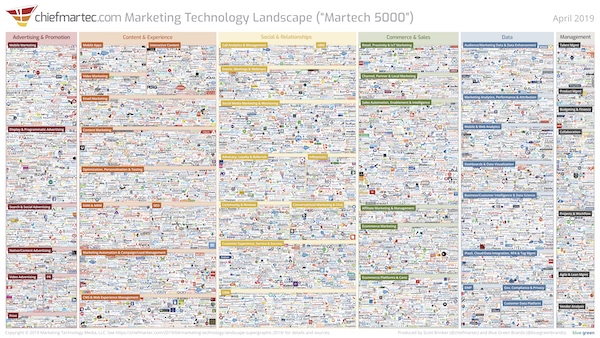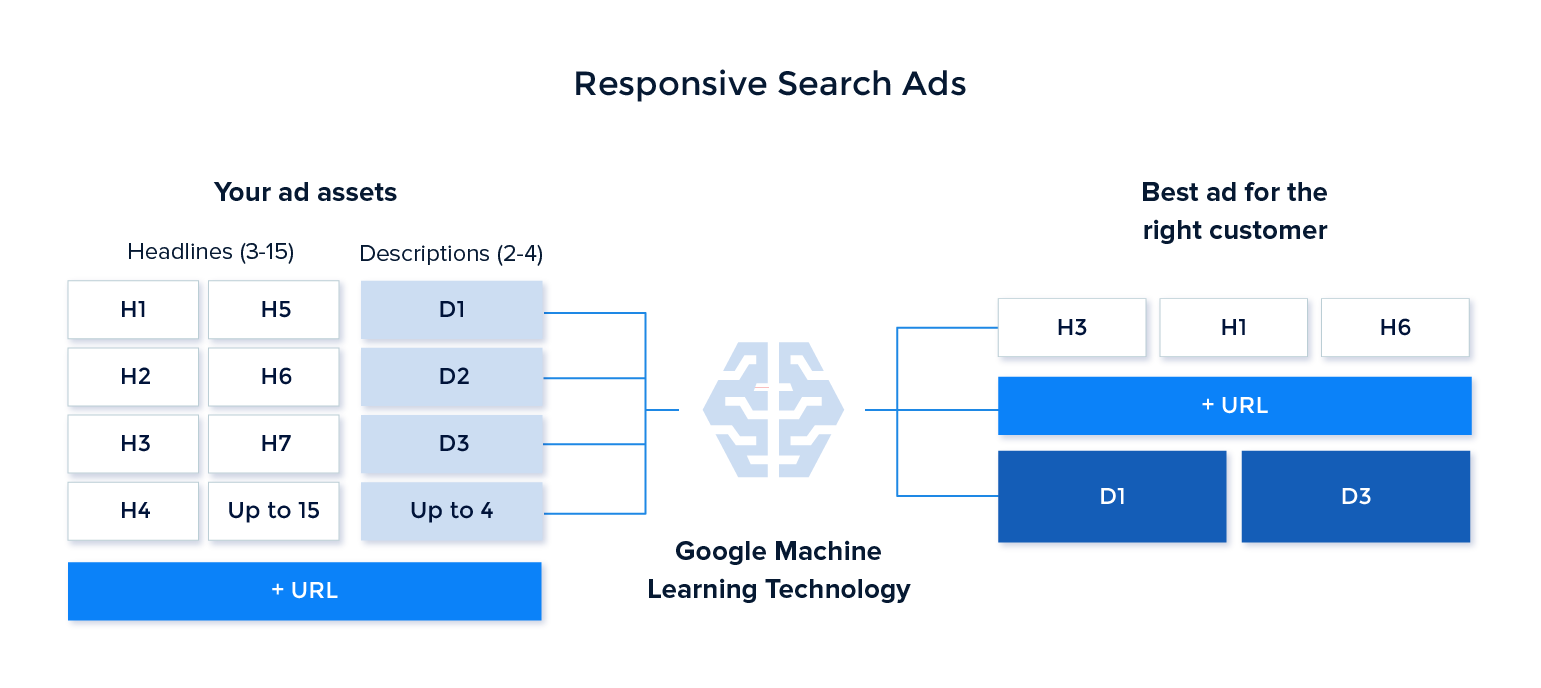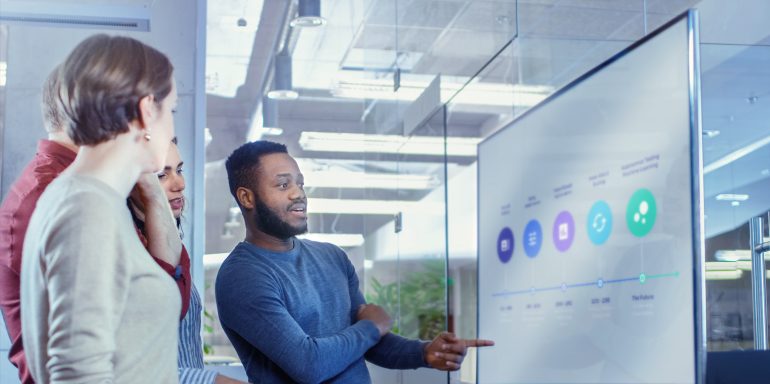Advertising has evolved tremendously over the years, as brands and landing page tools continuously adapt to new mediums, audiences, and trends. In the past decade alone, we’ve seen major changes in advertising and software automation.
From PPC and social media to AI and machine learning, advertisers, agencies, C-Level executives, and clients today search for and apply the best automation technology to their campaigns.
Before we get into the evolution of it all, let’s begin with the basics.
What does advertising automation mean?
Just as it sounds, it’s the process of automating different areas of your digital advertising efforts with various software and tools.
First and foremost, it frees up your time so you can focus on other important areas. According to Business.com, software automation can save advertisers 30% of their time. Not only that, but it optimizes your campaigns for higher CTR and lower CPC.
Implemented to its fullest extent, automation helps streamline lead generation, lead scoring, customer segmentation, customer lifecycles, analytics processes, and more. This is especially important as a business begins to grow and scale, and manual operations become unmanageable and ineffective without technology. When this happens, automation is key. Fortunately, businesses can automate any tasks that are well-defined — bids, budgets, keywords, campaign rules, etc.
So how did it all come to be?
A brief history of software automation
You’ve likely heard of marketing automation — the tools, platforms, and tactics that allow businesses to automate repetitive tasks (customer segmentation, campaign management, etc.) to nurture prospects and leads through multiple channels.
While the inception of marketing automation can be traced back to the 90’s (Eloqua, Infusionsoft, Salesforce were among the biggest names), the industry ignited in the mid-2000’s, and has continued to explode ever since. In 2011, less than 150 marketing technologies existed, and today, there are over 7,000:

As the number of vendors increased, so did integrations — and this opened a world of advanced techniques for combining tools and trends.
With all of this change in the advertising industry, it wasn’t long before advertising automation stemmed from the evolution of marketing automation.
Specifically, the uprising of social media led to a huge growth in social media advertising. With multiple advertising options available, though, it became difficult for businesses to manage their campaigns across more than one platform.
This is what ultimately began the evolution of automation — the need for technology to create an omnichannel advertising strategy. Since then — with data driving advertising decisions — software automation continues to expand while becoming more refined.
A glance at the evolution of automation
One of the most basic forms of advertising automation is ad scheduling. Facebook, Bing, and Google all offer this feature on their platforms:
- Facebook allows you to control what dates and times your ads are shown.
- Bing and Google do the same, and also allow for bid adjustments based on specific days and times. Bing even lets advertisers pinpoint the scheduling of ads to 15-minute increments throughout the day and adjust bids based on peak or low traffic volumes.
While countless automation methods exist, most of them fall under one of two primary categories: bid automation and content automation.
Bid automation
This type of automation tailors the most appropriate bid to every auction. Google Ads automated bidding is the most popular, with 6 different types of automated bidding available:
- Maximize Clicks to increase site visits
- Target Impression Share to increase visibility
- Target CPA to increase conversions with your target CPA
- Target ROAS to meet a target return on ad spend (ROAS) when you value each conversion differently
- Maximize Conversions to increase conversions while spending your budget
- Enhanced CPC to increase conversions while staying in control of your keyword bids
Beginning in July 2016, advertisers also had the option to use Smart Bidding: a combination of conversion-based bid strategies (Target CPA, Target ROAS, Max Conversions, and Enhanced CPC) that use advanced machine learning to help tailor the right bid to each auction. Smart Bidding factors in a wide range of millions of signals including device, location, time of day, remarketing list, language, and operating system to capture the unique context of every search and determine an optimal bid.
As of May 2019, more than 70% of all advertisers were using Google automated bidding strategies. Many of these are now also available on Bing.
In addition to Google and Bing automated bidding, there are also several bidding automation software, such as Acquisio, QuanticMind, and more.
Content automation
This automation type helps show your ads to the right audience. Examples of content automation include:
- Responsive Search Ads which allow you to create up to 15 headlines and 4 descriptions for Google to create combinations of and test for the best results:
- Responsive Display Ads utilize your assets (images, headlines, logos, and descriptions) to automatically generate ads to show on the Google Display Network.
- Dynamic Search Ads combine Google’s web-crawling technology and knowledge of a website’s inventory to automatically generate an ad and destination URL based on the query and the web page content.
- Dynamic remarketing shows your ads to people who have previously visited your website or used your mobile app. It even shows ads that contain specific products and services they viewed on your site.
- Ad Suggestions that Google creates when users don’t have multiple ads in each ad group. These can be found under “Ads & Extensions” on the Recommendations page of your Google Ads account:


Most of what we’ve discussed so far has been about Google Ads and its contribution to the evolution of automation. However, it’s not the only ad platform contributing to the automation revolution.
Facebook Automated Ads
This feature encourages advertisers to tell Facebook what’s most important for their business so it can create a custom advertising plan with step-by-step recommendations for the right ads. Automated Ads continually learns what performs best and makes suggestions for improvement.
It creates and manages your ads with:
- Multiple versions of your ad (up to 6) for Facebook to analyze and suggest CTA buttons, text, and other creative details based on information from your Page — and then automatically show the best-performing version.
- Tailored audience suggestions or an automatic audience option customized to your business, based on information from your Page — people near your business location, people who have related interests, etc.
- A recommended budget that is most likely to generate results based on your goal. You can also provide your own budget and Facebook will share the estimated expected results.
- Timely notifications about your ads to help you understand how they’re performing and ways to improve.
3rd party automation software
There are many 3rd party tools being used by digital advertisers, each with its own automation solutions that can be used on different ad platforms. Here are just a few:
SEMrush provides several unique automation solutions:
- Advertising Competitive Analysis to easily audit competitors
- Keyword Research assists with research but also provides metrics as CPC, competition level, trends, etc.
- Ad Research and Creation for researching competitors text, display, and PLA ads for ideas and inspiration
Smartly is great for Facebook, Instagram, and Pinterest ads that helps automate, create, optimize, and scale ad campaigns with:
- Automation and AI features to simplify ad operations with automated prospecting and retargeting campaigns
- Simple workflows to launch, clone, and bulk edit campaigns, creatives, and audiences in an instant
- Creative solutions that combine creative automation, ad buying, and creative testing on a single platform
- Reporting to track and analyze results with a holistic view of your campaign performance, even across ad accounts
Optmyzr is one of the most well-known automation tools used for search, display, shopping, and video campaigns. It has more than 50+ features to automate advertising strategies:
- Optimizations to find negative and positive keywords, run A/B tests, check for broken URLs, and build, maintain, and optimize Shopping Ads
- Data Insights including multi-account dashboards with alerts, anomaly detection, N-gram analysis, and track and fix Quality Score
- Report Engine with custom colors, footers, cover pages, flexible scheduling, and multi-account reports
Programmatic ad buying
Programmatic ad buying (and selling) has also played a role in changing the face of online advertising. Instead of humans, software and machines are now automatically buying and placing ads in various channels, which helps reduce buying time and costs.
This approach has become so popular that eMarketer predicts nearly 90% of all mobile display ads will transact programmatically by 2020.
What else is still to come with advertising automation?
Efficiency, scale, and low cost are just some of the many benefits that the evolution of automation has brought to advertising. Industry experts predict this is only the beginning, and that further advancements could lead to more transparency and cost efficiency for agencies and advertisers.
Whatever happens, automation software is proving its ability to enhance the overall ad experience and future of the digital advertising industry.
Instapage is focused on post-click landing pages and optimizing ad spend, always has been and always will be. Get a customized demo today and experience the power of Instapage yourself.

See the Instapage Enterprise Plan in Action.
Demo includes AdMap™, Personalization, AMP,
Global Blocks, heatmaps & more.
